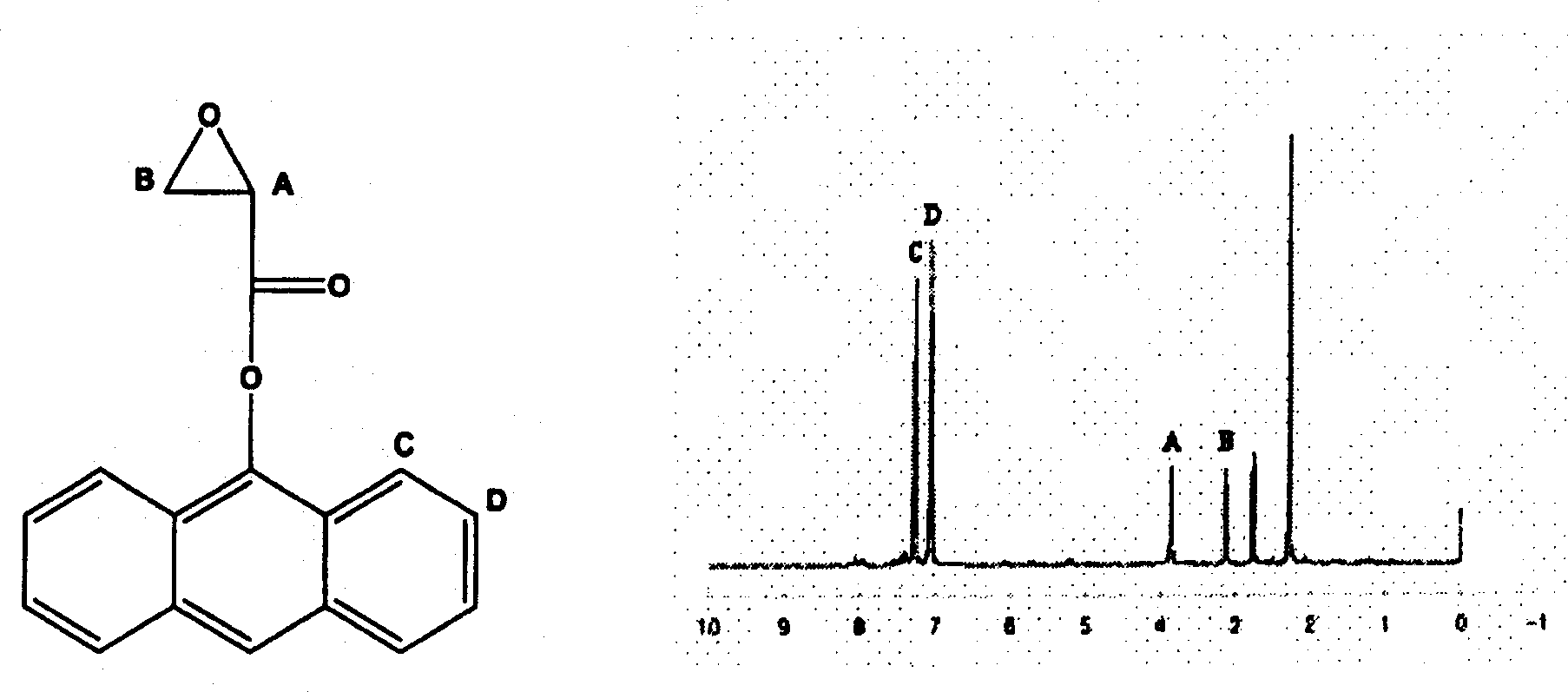Polymer for forming anti-reflective coating layer
An anti-reflection coating and polymer technology, which can be used in photosensitive materials used in optomechanical equipment, building structures, and photoplate-making processes on patterned surfaces, and can solve problems such as unsatisfactory light absorption.
- Summary
- Abstract
- Description
- Claims
- Application Information
AI Technical Summary
Problems solved by technology
Method used
Image
Examples
preparation Embodiment 1
[0055] [Preparation Example 1] Preparation of anthracene acrylate oxide
[0056] As shown in Reaction 1 below, 30 g of 9-anthracene acrylate and 1 L of chloroform were added to a 2 L reactor, and stirred and cooled in ice water. 47 g of 3-chloroperoxybenzoic acid (mCPBA) was slowly added to the cooled solution, and reacted at room temperature for 24 hours. After completion of the reaction, 3-chlorobenzoic acid (by-product) was removed by filtering the resulting product, followed by washing twice with a saturated aqueous solution of sodium sulfite, once with a saturated aqueous solution of sodium bicarbonate, and once with a saturated aqueous solution of sodium chloride. times and washed once with distilled water to remove residual 3-chlorobenzoic acid. Then, the product was dried with magnesium sulfate, and chloroform was removed under reduced pressure, and then the product was vacuum-dried for 1 day to obtain 25.5 g of pure anthracene acrylate oxide. exist figure 1 The NMR...
preparation Embodiment 22
[0059] [Preparation Example 2] Preparation of 2-hydroxyethyl-oxycarbonyl oxirane
[0060] As shown in Reaction Formula 2 below, except that 30 g of 9-anthracene acrylate was replaced with 30 g of 2-hydroxyethyl-acrylate (HEA), the reaction described in Preparation Example 1 was carried out to obtain 25 g of 2-hydroxyethyl-acrylate Base-oxycarbonyloxirane.
[0061] [Reaction 2]
[0062]
preparation Embodiment 3
[0063] [Preparation Example 3] Preparation of glycidyl-oxycarbonyl oxirane
[0064] As shown in Reaction Formula 3 below, except that 30 g of 9-anthracene acrylate was replaced with 30 g of glycidyl acrylate, the reaction described in Preparation Example 1 was carried out to obtain 22 g of glycidyl-oxycarbonyl oxirane .
[0065] [reaction formula 3]
[0066]
PUM
| Property | Measurement | Unit |
|---|---|---|
| size | aaaaa | aaaaa |
| glass transition temperature | aaaaa | aaaaa |
| molecular weight | aaaaa | aaaaa |
Abstract
Description
Claims
Application Information
 Login to View More
Login to View More - R&D
- Intellectual Property
- Life Sciences
- Materials
- Tech Scout
- Unparalleled Data Quality
- Higher Quality Content
- 60% Fewer Hallucinations
Browse by: Latest US Patents, China's latest patents, Technical Efficacy Thesaurus, Application Domain, Technology Topic, Popular Technical Reports.
© 2025 PatSnap. All rights reserved.Legal|Privacy policy|Modern Slavery Act Transparency Statement|Sitemap|About US| Contact US: help@patsnap.com



